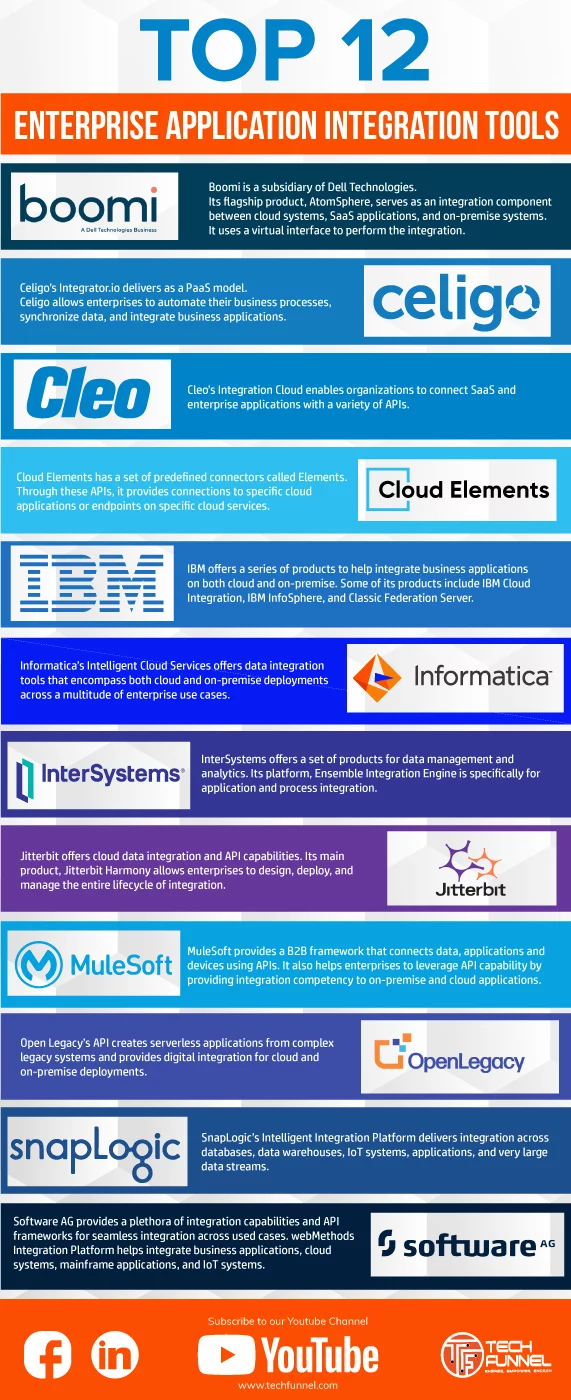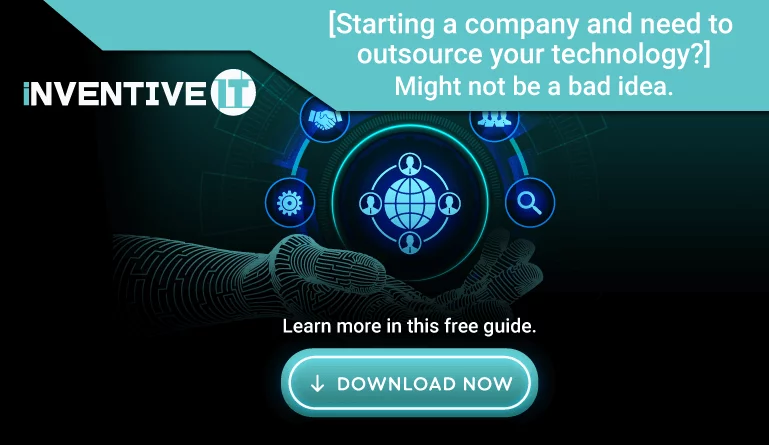Incorporate the best enterprise application integration system for your business needs.
Finding the best enterprise application integration system that will accommodate your business needs can be difficult but hopefully, this list of the best systems on the market will help you find the best option.
In today’s enterprise infrastructure, enterprise application integration tools are essential to incorporate. As enterprise application integration technology continues to advance, it can be difficult to know which tools will satisfy your business needs. In our mobile-driven economy, the need for faster, more accurate data has never been more essential to the success of a business.
With immediate results being a necessity of successful businesses, wrong information can easily disrupt business transactions, interrupt product development, and ruin customer experiences. Not following enterprise application integration best practices can drastically affect your bottom line.
Best Enterprise Application Integration Tools
Application integration software is designed to create a clear, efficient path for information to travel from application to application. There are many different categories of application integration tools and many options within these categories, making the task of selecting the best tool for your enterprise a difficult one.
This list will help you find a tool that will address your business needs or at the very least give you an excellent starting place to begin your quest to find the right enterprise application for your organization.

-
IBM WebSphere MQSeries
This enterprise application tool allows you to integrate back-end and external systems and enables you to reliably and consistently integrate your applications. This tool also allows you to fully leverage your existing software and hardware assets, eliminates the need to write complex communications codes, and even offers a choice of simple APIs that are consistent across a wide range of more than 80 supported operating environments provided by IBM and their business partners. With IBM WebSphere MQSeries, you’ll reduce the risk of data being lost if applications, web services, or networks fail. This tool also ensures that your data isn’t duplicated and completes as a single unit of work.
-
Oracle Fusion
This tool ensures that information gets handed off to the right people and the correct business applications, even when data can be found in many different places. With Oracle Fusion, you can ensure that you’ll develop, monitor, and improve processes over time with optimal portability and reuse potential. Oracle Fusion Middleware is modular, which means that it allows you to install, configure, and use only the services your company needs.

-
See Beyond
One of the best enterprise application services on the market, See Beyond, allows your business processes and logic to run natively within your application server. This tool also provides portal builder, Business Activity Monitoring (BAM), Online Analytical Processing (OLAP) facilities, Extract Transform and Lod (ETL) products, and many other tools to provide your business with a full-service enterprise application integration (EAI) experience.
-
BizTalk
This enterprise application tool enables your company to automate and optimize business processes and includes powerful, familiar tools to develop, design, deploy, and manage those processes. With BizTalk, you’ll be able to gather information, define naming conversations, plan team development, and set up and work with source control with ease.
-
Tibco
This enterprise application tool is often described as having the most advanced business process management features of any other enterprise application tool on the market. Tibco lowers cost-of-ownership through general n-way, rather than point-to-point integration. This tool also enhances networked applications based on components or object development models. Tibco will improve your overall system performance by eliminating repetitive batch requests to packaged application systems and offers your business the choice of message delivery service levels for optimal resource utilization.

-
Boomi AtomSphere
Boomi AtomSphere is the flagship product of Boomi, a Dell Technologies firm. This enterprise application integration software allows for integration processes between on-premises systems, software-as-a-service applications, and cloud platforms. Boomi Atmosphere utilizes a visual interface in the configuration of application integrations. The platform also features a runtime tool, Boomi Atom, which enables the deployment of integrations wherever they are needed. The Boomi AtomSphere solution is available in different editions, depending on the functionality and use case.
-
Celigo Integrator.io
Celigo has an Integration Platform-as-a-Service eai tool known as Integrator.io. The platform allows companies to automate processes, synchronize data, and connect applications. It offers an integration wizard which comprises drop-down menus, a visual area mapping interface, and an API assistant. The solution also features reusable pre-configured integration templates which can be found on the integrator.io marketplace, making it possible for users to build their own collection of reusables, solo flows.
-
Workato
Workato provides a self-service enterprise application integration software that unifies applications in the cloud and on-premises. The tool enables companies to design recipes, which are automated workflows that link applications to full tasks created by users according to a combination of actions, triggers, and apps. Currently, Workato connects to over 300 business applications, with the addition of new apps every now and then.
-
Cleo Integration Cloud
The Cleo Integration Cloud platform enables businesses to connect to SaaS and enterprise applications with a plethora of various APIs and connectors. The solution, which is one of the best eai tools, automatically integrates, accepts, connects, orchestrates, and transforms all B2B data types from all sources and to any destination, and may be deployed through a plethora of different methods. It is also possible to embed Cleo Integration Cloud for Information Services or SaaS organizations and can also be used as a managed solution for offloading advanced integrations to the experts of the vendor.
-
Software AG WebMethods.io
Software AG provides application and data integration for a vast range of integration use cases and scenarios. Its WebMethods integration platform allows companies to integrate IoT devices, mainframe systems, clouds, and applications. This eai tool was built for cloud-driven integrations that scale up or down. It also features out-of-the-box connectivity to Software as a Service application like ServiceNow and Salesforce, as well as over 300 application connectors that need zero codings.
-
Cloud Elements
Cloud Elements is one of the top eai tools in the market. It features an API integration product that offers pre-built connectors known as Elements. Elements support connections into certain cloud service endpoints or cloud applications and offer standard authentication, unified error management, event-based workflows, search, and discovery APIs.
This tool was created to improve the experience of the developer regardless of the backend in the application. Cloud Elements was also designed to provide a coherent API layer as well as standards-driven implementation across infrastructures.
-
SnapLogic Intelligent Integration Platform
The Intelligent Integration Platform is an eai tool from SnapLogic. It offers integration across IoT deployments, large data streams, data warehouses, databases, and applications. It enables both business and IT users to build data pipelines that can be launched in the cloud or on-premise. The tool features an HTML5 visual designer as well as a proprietary AI algorithm named Iris, which studies common integration trends and facilitates self-service via the recommendation of flows. In addition, it also gives full support for sophisticated transformations, aggregations, parameterization, triggers, reuse, and confessional operations which maximizes the flexibility of the platform.
Selecting the right tools is not easy, but having the right tools are always worth the investment.





